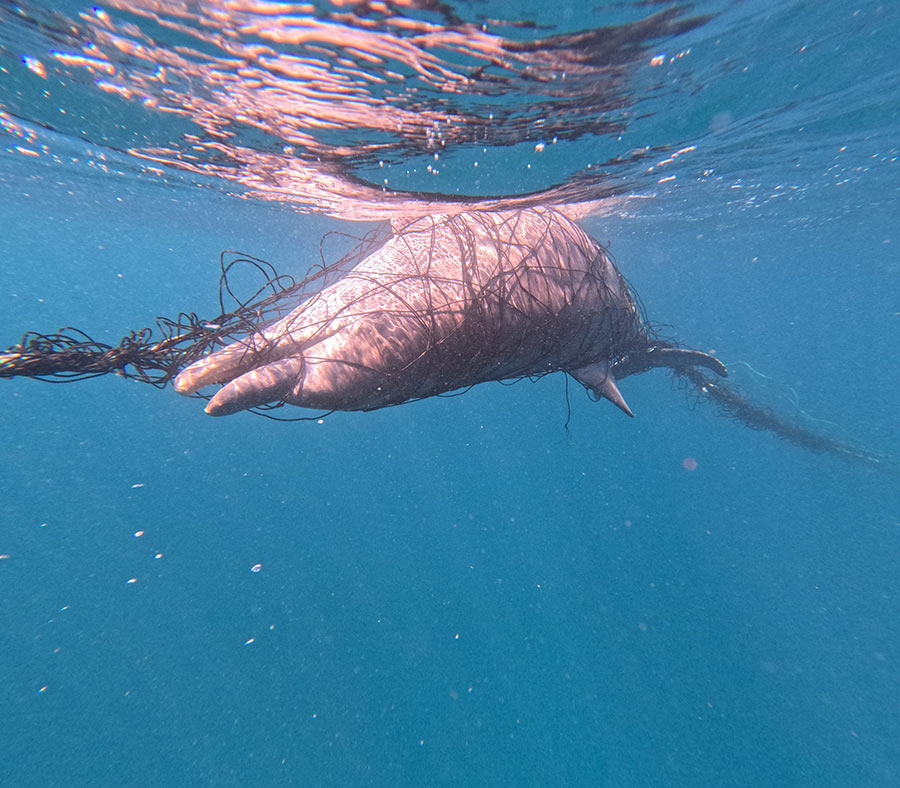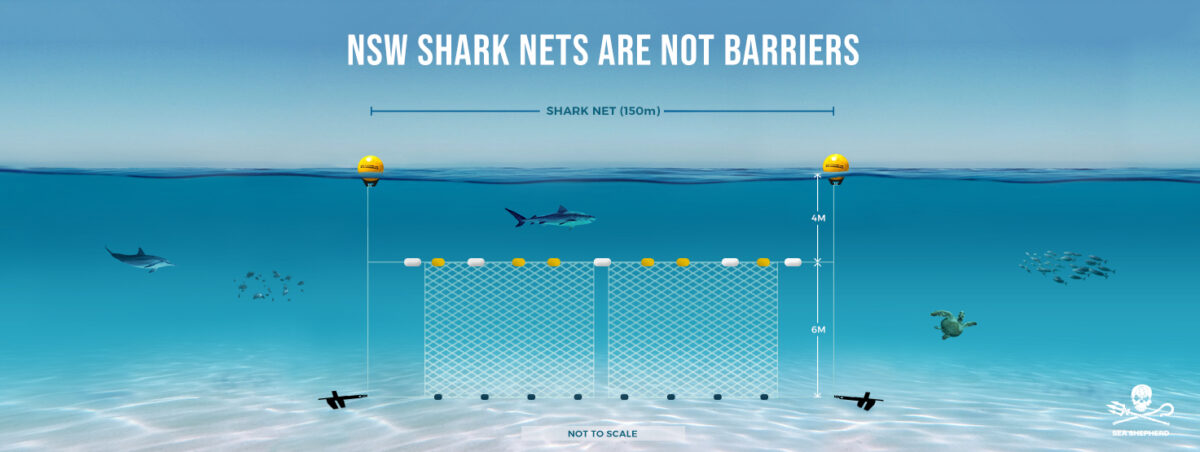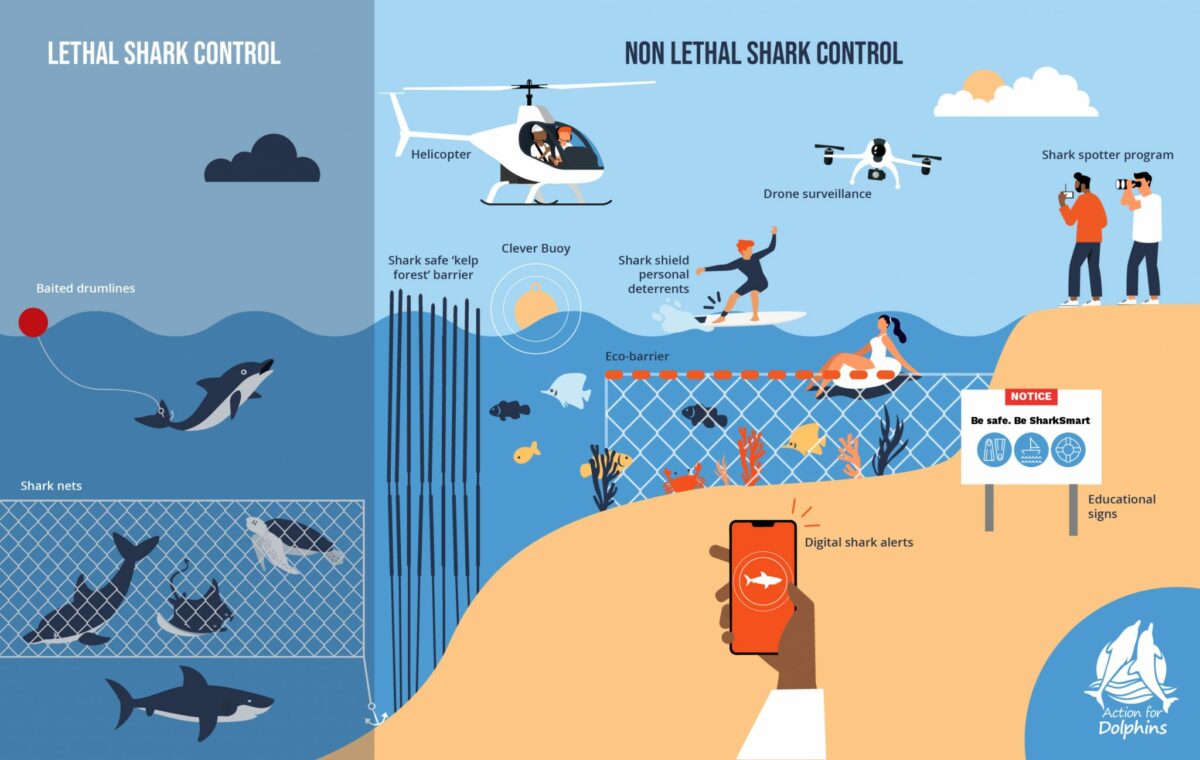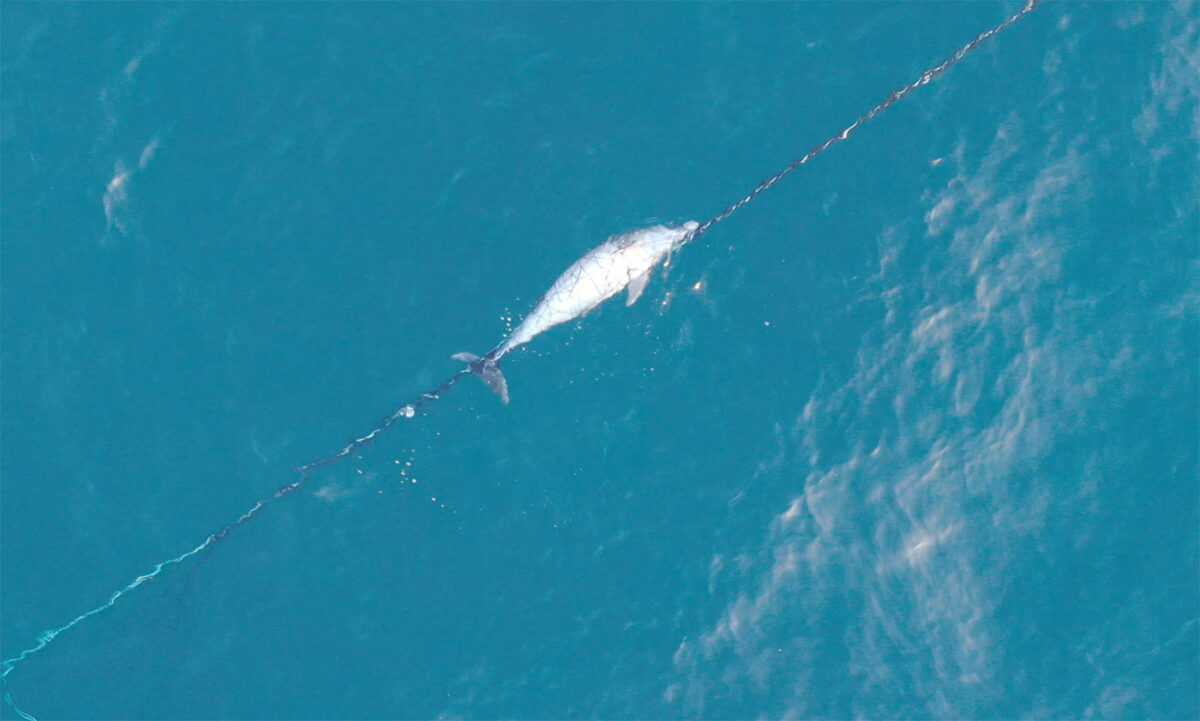Popular local drone expert Jason (AKA Dronesharkapp) first captured the harrowing footage on his usual morning drone survey of the region. Zooming in, it was easy to identify that a dolphin had been entangled and wrapped up in the shark net, dragging the entire net to the surface of the ocean.
This helpless dolphin would have spent hours struggling, before eventually drowning in their own home.

Credit: motheroceanfreediving
Mother Ocean Freediving captured the dolphin significantly entangled in the net. Sadly this dolphin’s experience is not unique. Hundreds of marine animals who travel in New South Wales’ waters are indiscriminately caught in these nets.
Shark nets are installed at 51 beaches between Wollongong to Newcastle for 8 months of the year. They are an antiquated, and disproven, means of effective protection for ocean users.

Credit: Sea Shepherd Australia
These shark nets are only 150m x 6m, deployed 500m out to sea in water 10-12m deep. They are not designed as a barrier to the open ocean, nor do they ‘deter’ sharks in the area. Their sole purpose is to entangle whatever swims into it – resulting in the death of thousands of marine life since the nets were first installed in 1937.
Quite simply, there are better ways to protect ocean users without harming marine life.

Modern, evidence-based shark mitigation technologies include drone surveillance, shark listening stations, personal deterrent devices, community education and surf life saving patrol.
Subscribe to our newsroom
Keep informed on the risks faced by dolphins and small whales, and the global efforts to protect them.
With the roll-out of these measures throughout New South Wales, only one question remains: How many more animals need to drown before the NSW Government follows the years of advice it has received and commit to the removal of shark nets for good?
